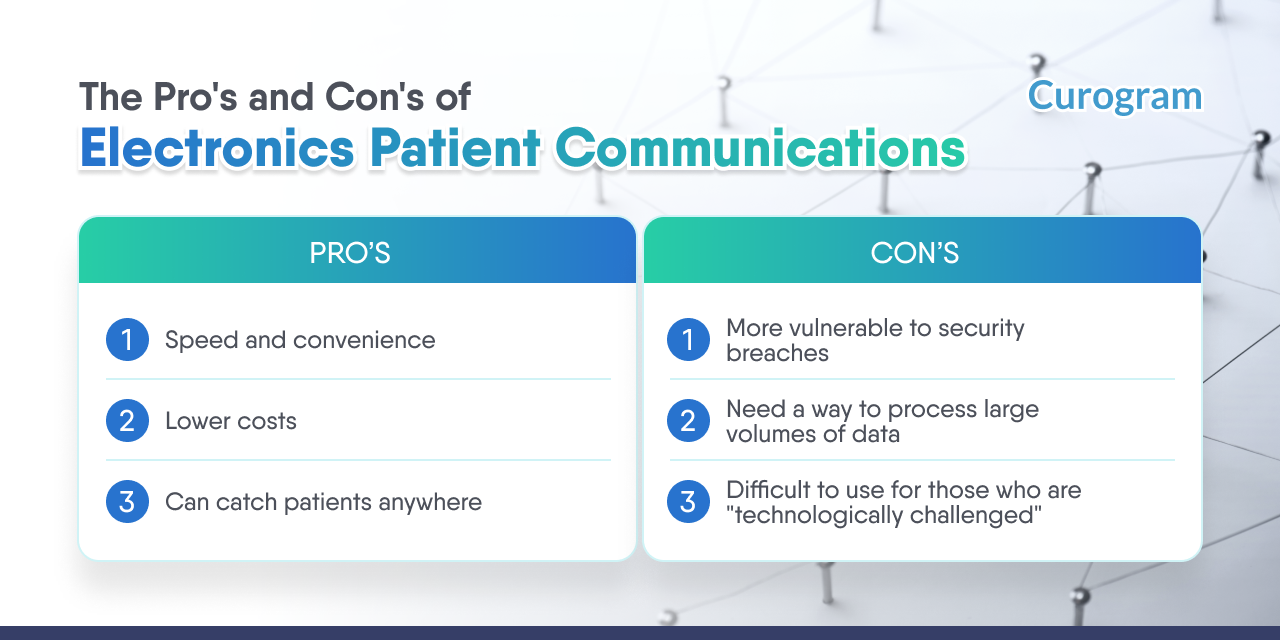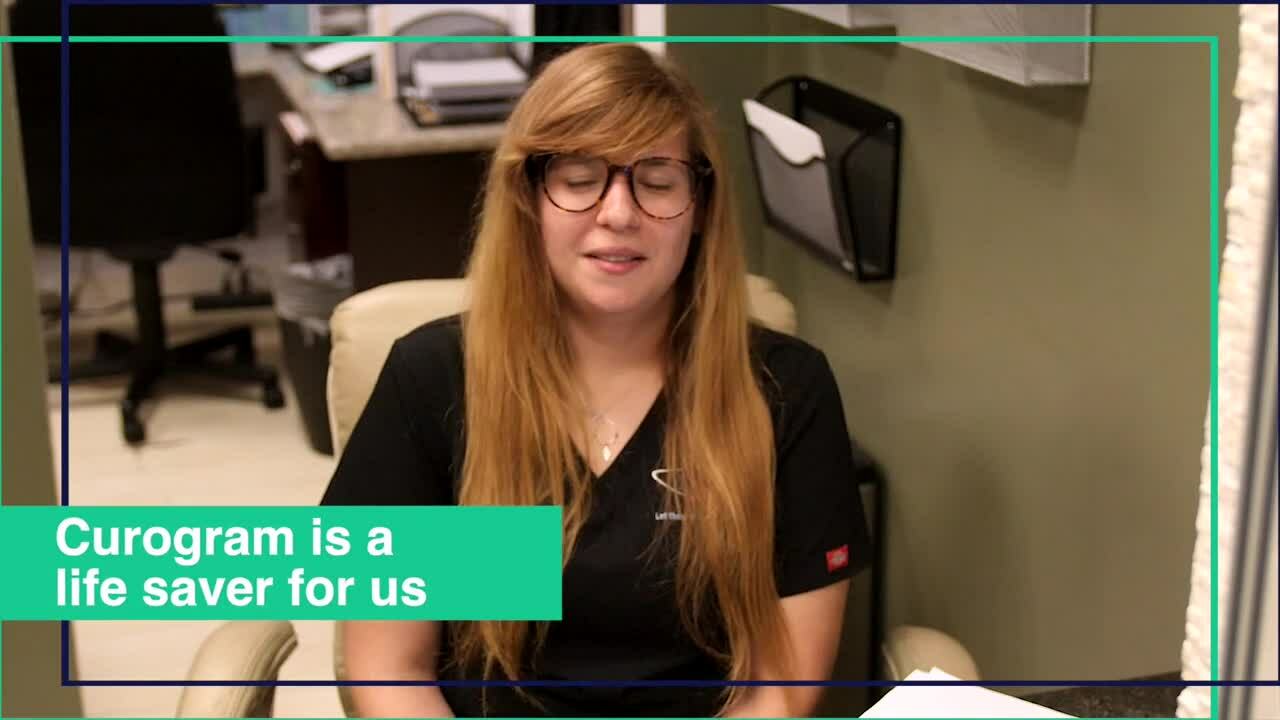Communication is imperative for effective planning, coordination, control, and decision-making. Standard communication processes are becoming increasingly insufficient to meet the many needs of the healthcare industry and medical practices. Electronic patient communication is the solution for convenient, cost-effective, and fast patient engagement. This article addresses the significant pros and cons of implementing electronic patient communication in healthcare.
What is Electronic Communication?
Electronic communication is a type of modern communication through which messages, files, and other information are shared and transmitted via computers, laptops, mobile devices, telephones, and other electronic devices over networks.
Electronic communication helps providers establish an intimate conversation with their patients while responsibly sharing important healthcare information (images, lab results, prescriptions, or other protected health information) via electronic means. There are pros and cons to electronic patient communication in healthcare. Here are a few:
Pros of Electronic Patient Communications.
1. Speed and Convenience
Electronic communication is usually prompt and convenient. It allows medical practices to message patients and share information such as appointment details, multimedia messages, and other information or files very quickly.
Electronic patient communication can be instant and reach individuals on the go. The speed of vital health information can save patient lives. The outcome of a patient struck with a sudden health problem, for example, can be altered with the delivery of immediate information.
2. Low Cost
Electronic patient communications can save both your practice and your patients time and money. For example, text messaging is cheaper than conventional mail — and involves minimal to no cost. You can also disseminate urgent and crucial information via text or phone. Patients no longer need to bear the cost of transportation, when they need to ask questions about their prescriptions, appointment details, and other health-related information.
3. Reaches Patients Anywhere
Electronic communication involves the use of mobile devices such as cellphones, laptops, and tablets. These devices enable patients to always stay in touch with their healthcare providers. Patients can easily carry these devices around, hence the portability of information and messaging.
This form of communication can enhance the productivity of providers or medical staff who work online. They can do their tasks anywhere, even when they are away from home — at a conference perhaps or on a plane.
Since the mobility of electronic communications allows providers to offer care from anywhere, the same applies to patients. For instance, patients who have health concerns or suddenly need more information about their medication can access their health information via a patient portal or send a text message or email to their provider if they need assistance. There’s no need for an office visit.
Cons of Electronic Patient Communications
1. More Vulnerable to Security Breaches
Security threats are a significant disadvantage of electronic communication. They include cybercriminal attacks and other forms of computer security threats. Statistics show that over 6,000 viruses are created monthly. Without secure telehealth software, you can lose crucial information to cybercriminals or hackers.
2. Large Volume of Data
The technology that allows patients to keep in touch at all times can be the reason for their dependency on it. Therefore, the volume of telecommunication data you receive may quickly increase at a rate that your management may not be able to absorb within the relevant time limit.
3. Difficult for Those Who are "Technologically Challenged"
Not everyone knows how to use electronic communication properly. Most of these patients are senior citizens who are unfamiliar with how the system works. Some may still prefer traditional communication, such as using a telephone to make a phone call, while others prefer visiting in person.
Summary of the Pros and Cons
|
Pros |
Cons |
|
Speed and convenience |
More vulnerable to security breaches |
|
Lower costs |
Need a way to process large volumes of data |
|
Can catch patients anywhere |
Difficult to use for those who are "technologically challenged" |
Electronic communication plays a vital role in our everyday lives. By knowing the pros and cons of integrating electronic patient communications into your practice, you can use technology to your advantage. But always be aware of Protected Health Information (PHI) when using electronic communication. Make sure to follow HIPAA regulations at all times.
Take your practice to the next level by implementing efficient electronic patient communications.
Enhance your engagement and coordination with your patients by upgrading your communication system with Curogram’s HIPAA-compliant telemedicine software. By welcoming electronic patient communications into your system, you can provide a seamless flow of communication in your practice alongside other benefits such as reducing patient no-shows, enhancing patient engagement, and improving patient satisfaction. Contact Curogram today for more information.



.png)
.png)
 3 Min Read
3 Min Read
 0
Comments
0
Comments


